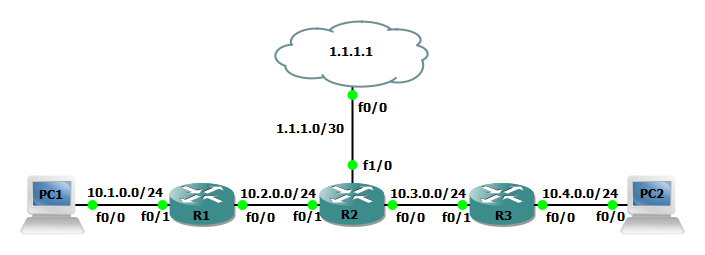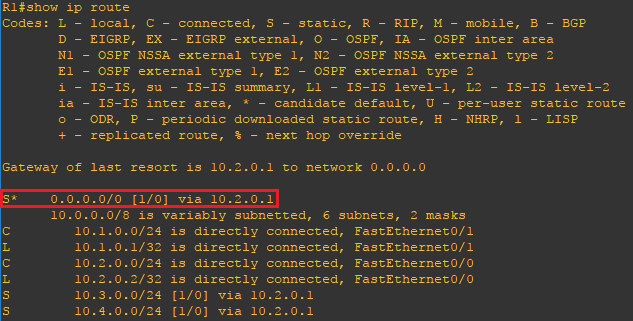What is a default route and why to use them?
Default routes are used to direct packets addressed to networks not explicitly listed in the routing table. Default routes are invaluable in topologies where learning all the more specific networks is not desirable, as in case of stub networks, or not feasible due to limited system resources such as memory and processing power.
In the network below there are a total of three routers and two end-user computers. In order to reach remote networks not explicitly listed in the routing table a default route must be set on R1, R2, and R3. Without a default route every router must have a explicitly defined route to every network that devices need to traverse to reach remote systems. Similarly every router would need a route back to the originating network in order to return traffic. Default routes are the mechanism to simplify that process.

Steps to configure default routes
R1(config)#interface FastEthernet0/0 R1(config-if)#ip address 10.2.0.2 255.255.255.0 ! R1(config)#interface FastEthernet0/1 R1(config-if)#ip address 10.1.0.1 255.255.255.0
Step 2: Configure a default route that encompasses all networks not explicitly listed in the routing table. This route will direct all traffic to the immediate up stream router. Each upstream router will also need a default as well for default routing to be possible.
R1(config)#ip route 0.0.0.0 0.0.0.0 10.2.0.1
Step 3: Repeat the same steps on all remaining routers with the applicable interface and routing configurations.
Verify the configuration
Now that the configuration is finished lets verify our routes. Using the show ip route command you can verify the expected routes in the routing table. Use the ping command to verify connectivity.

